i’m now a full member at Graphic Arts Workshop! i get my keys on Sunday!!
Graphic Arts Workshop is a cooperative with approximately 40 members working in fine art printmaking. like City Arts GAW is a non-profit, with no paid staff. we share and maintain the fully-equipped printmaking studio. they have several printing presses and tons of equipment.
i’ve met a few of the members so far. here’s Vanessa:
and Pete:
this is currently my favorite press. i love the pirate ship wheel.
lately i’ve been working on a couple of plates that have a photo image of some hooks hanging on a chain link fence. i made two plates out of the same image in class at Kala. Kazuko Watanabe taught me two methods of photoetching. in one we exposed a pate that had a photosensitive polymer to a positive of my image, the polymer reacted and hardened where it was exposed to light. after it’s washed and hardened the polymer has ridges and valleys like a copper plate. the second method she taught used a photosensitve ground which reacts to the light and later when you put it in the acid only the dark areas will be etched to create ridges and valleys etched into the copper like a normal copper plate.
in class at Crown Point Press i applied a soap ground to the copper plate and etched the plate some more. on my own at GAW i applied a surgar lift to the copper plate and etched it yet again:
what you may be able to see in this shot is the lighter parts of the copper plate that have been etched, the darker copper which prints white (it’s the background) and the dark and shiny sugar solution on the plate. when this is dry i will coat the plate with a ground that resists the acid right over the sugar. when that dries i wash the plate in warm water and all the sugar will lift up, breaking through the ground creating unprotected areas where the acid can bite the copper.
this is the plate coated and drying:
this is my acid set up.
i love this shot! it shows the 2 trays, one with acid and the other with water. it also shows all the acid stored under the counter, the big huge exhaust fan, and some cool random coloring on the back of the table.
after the plate is etched, i clean it up and it;s time to ink it. i love the huge hotplate at GAW which is set up nice and high to make inking and wiping the plate a joy!
i have to set up the press, which includes getting the pressure of the rollers just right. thank goodness the press at GAW has a gauge with numbers so you can make both sites the same and keep track of what works best for a plate and paper combination.
in this picture the image is on the white paper which is pulled up against the blanket which has been pulled up over the roller. you can see the black and white impression from the copper plate that i’ve already pressed. i left the paper trapped under the roller to hold it steady while o switch plates. i have a template on the bed of the press so i could put the second plate in the same place. the plate that’s there now is the polymer plate. i’ve inked it yellow so i can see how the two plates interact.
finally i wanted to transfer the ink onto the copper plate so i could decided what i wanted to do the the copperplate next.
this is where we dry the prints in this enormous rack!
so i’m a happy artist at GAW!



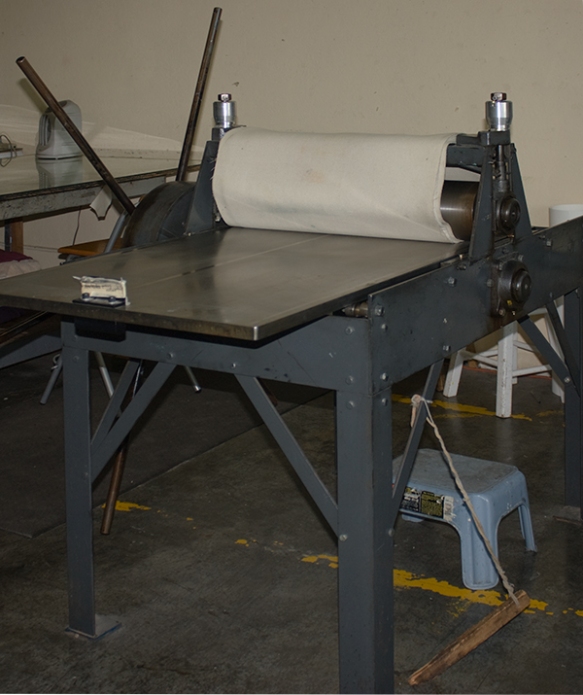

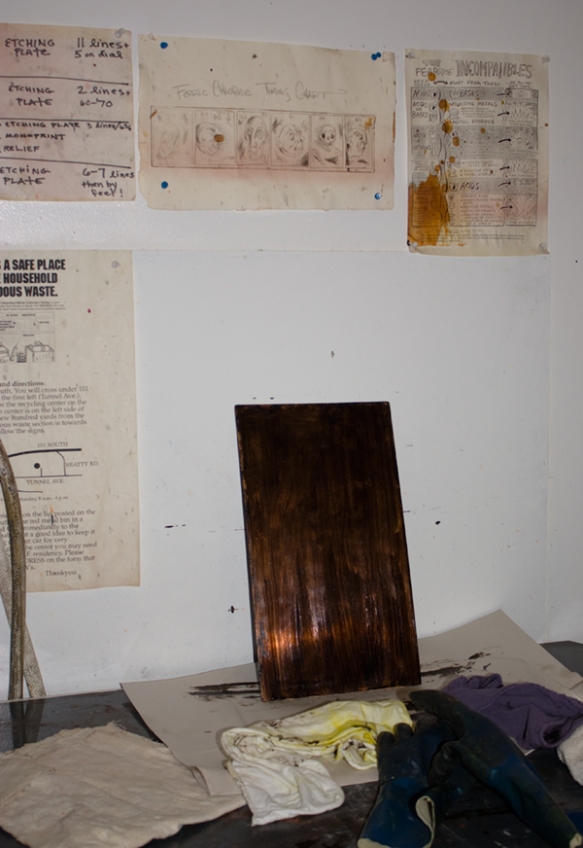

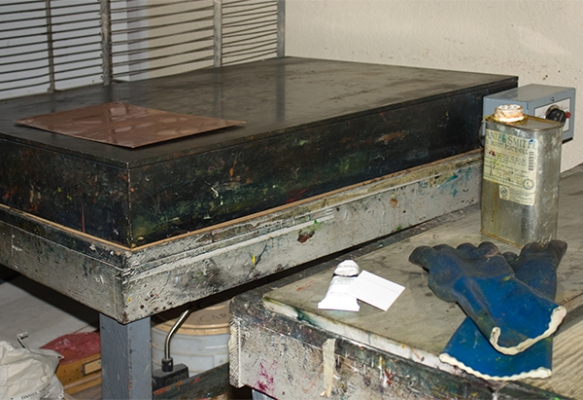
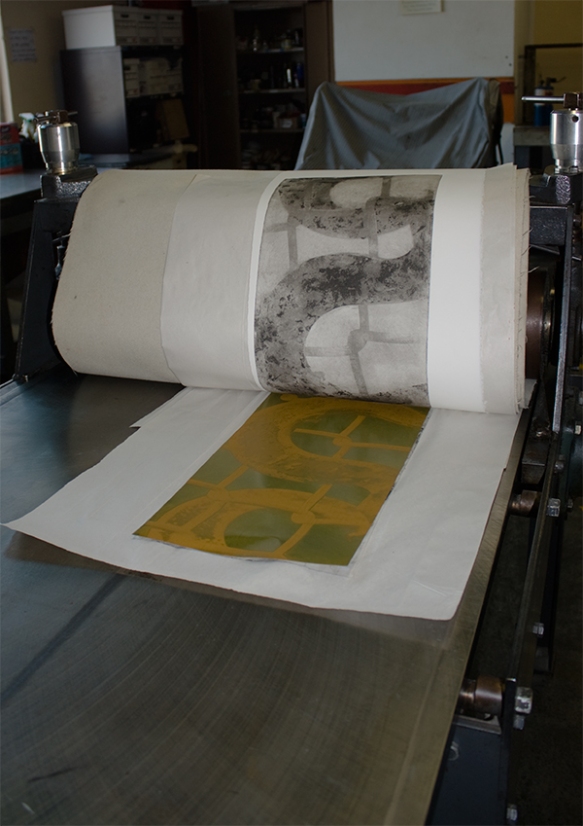
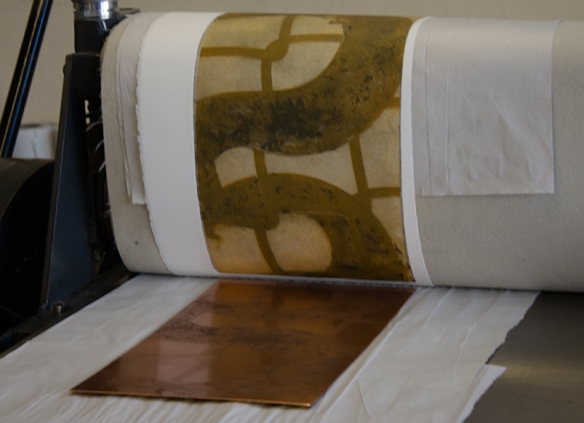




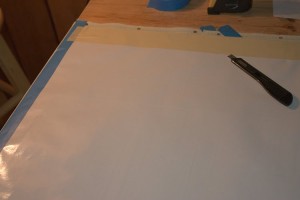
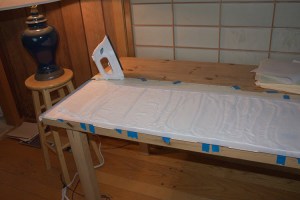
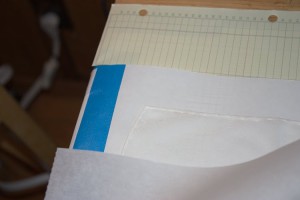












You must be logged in to post a comment.